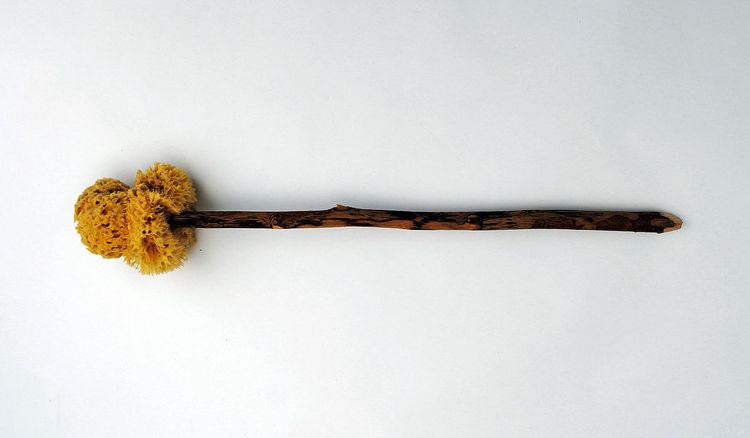 | ||
The xylospongium, also known as sponge on a stick, is the ancient precursor of the modern toilet brush. {there is no reference for this claim. The toilet brush is used for cleaning the toilet; the sponge was for "personal hygiene" based simply on the layout of the Roman toilet seat with its front hole and slot connected to the top seat-hole, and the small water channel which ran in front of the seat. One can also conjecture that this use gave rise to the phrase "wrong end of the stick".} It consists of a wooden stick (Greek: ξύλον, Xylon) with a sponge (Greek: Σπόγγος, Spongos) fixed at one end.
In the classical antiquity a xylospongium might be used in the same way as we use a toilet brush. All primary sources implicate the use of a xylospongium in the context of ancient latrines, but none clarifies the handling exactly.
In the baths of the seven sages in Ostia, a fresco from the 2nd century contains the Inscription (u)taris xylosphongio which is the first known mention of the term. Also in the early second century a papyrus letter of Claudius Terentianus to his father Claudius Tiberianus uses the term xylospongium in a phrase.
In the middle of the first century Seneca reported that a Germanic gladiator had committed suicide with a sponge on a stick. The German hid himself in the latrine of an amphitheater and pushed the wooden stick into his gullet and choked to death.
